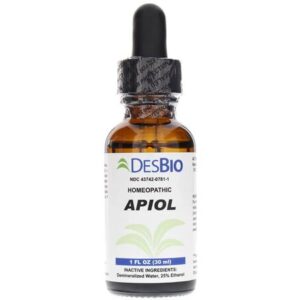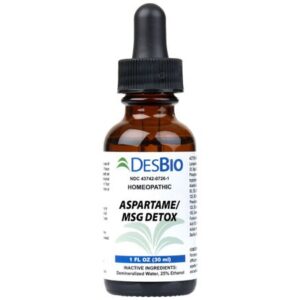Description
Details
P.E.A.k Antioxidant Support combines the anti-inflammatory properties of PEA with R+ alpha lipoic acid which is a proven anitioxidant. R+ alpha lipoic acid has been shown to promote healthy blood glucose levels. The body naturally produces PEA during times of stress, danger and disease to relieve discomfort and promote and healthy inflammatory response. PEA and R+ are a potent combination, protecting the nerve cells, relieving pain and inflammation and providing antioxidant support.
AOR Advantage
P.E.A.k Antioxidant Support combines PEA with a well-known and highly versatile antioxidant, R+ alpha lipoic acid (R+). Clinically, PEA has shown to be an excellent anti-inflammatory. PEA and R+ are a potent combination, protecting the nerve cells, relieving pain and inflammation and providing antioxidant support.
To learn more visit https://aorpea.ca
Label Information
NPN
80096768
Discussion
Provides antioxidants and helps to promote healthy glucose metabolism. An anti-inflammatory to help relieve pain.
Guarantees
AOR™ guarantees all ingredients have been declared on the label. Contains no wheat, gluten, corn, nuts, peanuts, sesame seeds, sulphites, mustard, dairy, eggs, fish, shellfish or any animal by-product.
Adult Dosage
Take one capsule daily with/without food, or as directed by a health care provider.
Cautions
Consult a health care practitioner prior to use if you are pregnant or breastfeeding, if you have diabetes or if symptoms persist or worsen. If you experience sweating, paleness, chills, headache, dizziness and/or confusion, discontinue use and consult a healthcare practitioner (as these may be symptoms of serious low blood sugar). Consult a health care practitioner for use beyond two months.
Disclaimer
The information and product descriptions appearing on this website are for information purposes only, and are not intended to provide or replace medical advice to individuals from a qualified health care professional. Consult with your physician if you have any health concerns, and before initiating any new diet, exercise, supplement, or other lifestyle changes.
Supplement Facts Serving Size: 1 Capsule
ǂ Palmitoylethanolamide (PEA)
200 mg
R-(α)-lipoic acid sodium salt
200 mg
ǂ Micronized, Genuine Italian Source
Non-medicinal ingredients: none. Capsule: hypromellose.
Research Facts
Analgesic Pain
PEA in Pain a Meta-analysis
This 2017 meta-analysis using randomized controlled trials, to determine the efficacy and safety of PEA for treating chronic pain. Ten studies were identified for review, eight of these studies were randomized controlled trials with 743 patients receiving PEA and 460 patients receiving inactive controls. Analysis of the results of these trials found that PEA supplementation led to significantly greater pain reduction compared to controls. The dosages of PEA ranged from 300 mg/day-1200 mg/day with most showing optimal benefit at 600 mg/day or greater for supplementation from 10-180 days. Further, researchers found that PEA treatment groups had fewer dropouts due to adverse events as compared with placebo or no treatment groups. The few reported adverse events included GI upset, drowsiness, and heart palpitations.
Artukoglu BB, Beyer C, Zuloff-Shani A, Brener E, Bloch MH. Efficacy of Palmitoylethanolamide for Pain: A Meta-Analysis. Pain Physician. 2017;20(5):353-362.
Neuropathic pain
Study #1: Diabetic peripheral neuropathy and PEA supplementation
Neuropathic pain due to conditions such as diabetes is a common serious complication of the disease. Patients who were suffering from painful diabetic neuropathies (n=30) were recruited for this 60 day open label study. Pain severity was assessed using a number of assessment tools including Michigan Neuropathy Screening instrument; intensity of symptoms by the Total Symptom Score; and the Neuropathic Pain Symptoms Inventory. Hematological and blood chemistry tests to evaluate metabolic control and safety. Micronized and ultra-micronized formulations of PEA (300 mg/day) administered orally reduces pain scores in diabetic patients with peripheral neuropathy
Schifilliti C, Cucinotta L, Fedele V, Ingegnosi C, Luca S, Leotta C. Micronized palmitoylethanolamide reduces the symptoms of neuropathic pain in diabetic patients. Pain Res Treat. 2014;2014:849623.
Study #2: High dose management for diabetic neuropathies
This study published in 2014 assessed the impact of additional PEA supplementation in Pregabalin, Gabapentin, and/or Tramadol treatment resistant individuals (n=30). Subjects recruited had diabetic or traumatic chronic neuropathic pain, not controlled by other oral conventional therapies suffering from a chronic pain for at least 100 days at the time of recruitment. Using the Visual Analogue Scale (VAS) as a measure of pain subjects were provided with oral PEA 1200 mg/day in sachet formulation for the first 10 days and 1200 mg/day in tablet formulation between the 10th and 40th days. Researchers found that ultra-micronized PEA 1200 mg orally reduced the neuropathic pain symptom inventory scores of patients with diabetic or traumatic neuropathic pain.
Cocito D, Peci E, Ciaramitaro P, Merola A, Lopiano L. Short-term efficacy of ultramicronized palmitoylethanolamide in peripheral neuropathic pain. Pain Res Treat. 2014;2014:854560
Study #3: PEA in Neuropathic Pain Meta-analysis
A meta-analysis by Paladini et al. published in 2016 evaluated the safety and efficacy of micronized and ultra-micronized PEA confirmed that it produced analgesia in patients with chronic or neuropathic pain in a manner that was independent of age and gender. Twelve studies were included (three were double-blind trials, two were open-label trials vs standard therapies, and seven were open-label trials without comparators.) The authors concluded that PEA elicits a progressive reduction of pain intensity significantly higher than control- the magnitude of reduction is 1.04 points (vs 0.2 points in placebo) every two weeks (35% response variance.) Making it an effective option for neuropathic pain management.
Paladini A, Fusco M, Cenacchi T, Schievano C, Piroli A, Varrassi G. Palmitoylethanolamide, a Special Food for Medical Purposes, in the Treatment of Chronic Pain: A Pooled Data Meta-analysis. Pain Physician. 2016;19(2):11-24.
Study #4: ALA in neuropathy and obstetrics
This 2014 review assessed available literature relating to management of neuropathic pain using ALA. The review highlights human clinical research finding ALA supplementation at 300 mg-600 mg per day effective in management of sciatica, carpel tunnel syndrome (600 mg/day for three months), and meraglia parasthetica as a monotherapy, combined therapy in low back pain. The review also highlights the safety with doses up to 2400 mg/day orally and 600 mg/day intravenously being well tolerated.
Costantino M, Guaraldi C, Costantino D, De Grazia S, Unfer V. Peripheral neuropathy in obstetrics: efficacy and safety of α-lipoic acid supplementation. Eur Rev Med Pharmacol Sci. 2014;18(18):2766-2771.
Study #5: Meta-analysis in diabetic polyneuropathy
This meta-analysis published in 2004 comprised n=1258 patients (alpha-lipoic acid n=716; placebo n=542) patients with polyneuropathis from four large scale trials (ALADIN I, ALADIN III, SYDNEY, NATHAN II.) The outcomes measured were the Total Symptom Score (TSS) Neuropathy Impairment Score (NIS), NIS of the lower limbs (NIS-LL), individual NIS-LL components, and the rates of adverse events. Reviewers found that three weeks of IV supplementation of ALA at 600 mg/day yielded improvements over placebo of 24.1% for TSS and 16.0% for NIS-LL. Symptoms such as pain, burning, and numbness, pin-prick and touch-pressure sensation as well as ankle reflexes were improved in the ALA treated group in a statistically significant manner over placebo.
Ziegler D, Nowak H, Kempler P, Vargha P, Low PA. Treatment of symptomatic diabetic polyneuropathy with the antioxidant alpha-lipoic acid: a meta-analysis. Diabet Med. 2004;21(2):114-121. doi:10.1111/j.1464-5491.2004.01109.x




